| My pages about France |

Paris
France

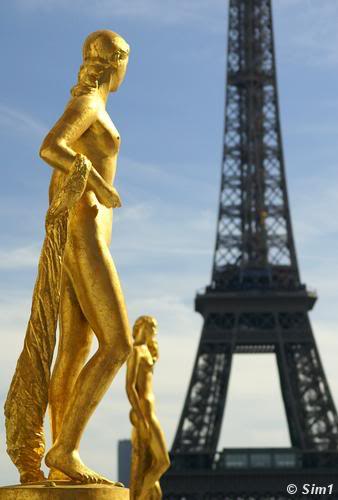
I've been to Paris twice, and my recent trip in October 2006 is the one that is in my mind now and the one that I want to remember. I would like to give you a bit of 'my' impressions about Paris and I hope you will enjoy reading it. I know I had have fun writing it, as it brought back so many wonderful memories :-))
On this page I will start at the Place de la Bastille and slowly walk westwards and discover the city on the right side of the Seine. After that working my way back slowly on the left bank ending up at the heart of the city at the Ile de la Cité.

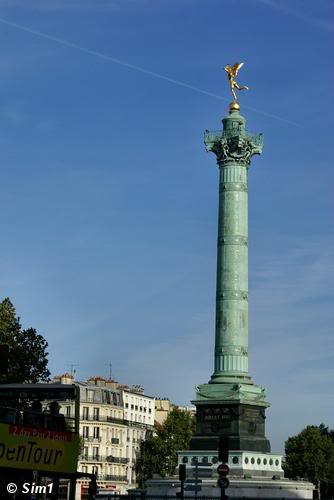
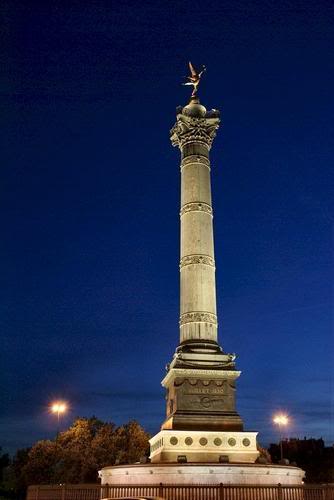
My journey around Paris started off at the Colonne de Juillet, located on the Place de la Bastille. My hotel was located in this area, and this was one of the first views of Paris I got. The long column, almost 52 metres high, with the gold statue on top was towering high above anything else in the area. And like everything in Paris this column has a long history to it.
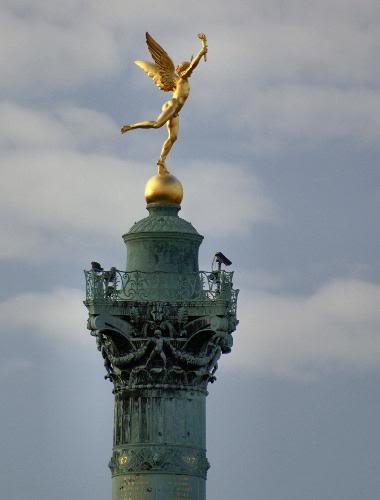
The Colonne de Juillet is located in the middle of the square and is surrounded by a rather busy roundabout. The square and its surroundings are often referred to as the 'Bastille', which is a lively and popular area in Paris, with lots of cafes and bars. But, hahaha, I guess I am getting on a side-track here; back to the column and why it is placed here....
The column dates back to July 28, 1840, and was build in order of King Louis-Philippe (1773 - 1850) who wanted a monument to commemorate both the French revolution of 1789 (also known as the storming of the Bastille) and the "three glorious days" of the July revolt in 1830. The column is located roughly where the medieval Porte Sainte-Antoine once stood.
On a sunny day the glistering gold-leafed bronze statue on top will certainly draw your attention. This is the Génie de la Liberté (the Spirit of Freedom) and was designed by sculptor Augustin-Alexandre Dumont.

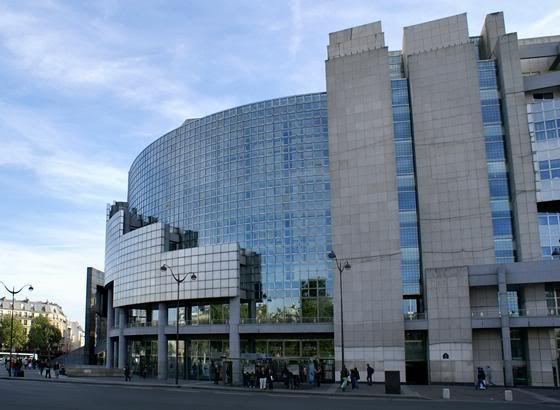
Also located on the Place de la Bastille is the interesting building of the Opéra National de Paris Bastille. It is hard not to notice this building as it is in such a sharp contrast with the more historical surroundings. But I can't say it is ugly, or out of tone with the rest, I actually found the architecture rather interesting and fascinating to look at. Unfortunately with the busy square in front of it, it wasn't so easy to get a good view (especially with the camera) of the whole building.
I haven't been inside, although I wouldn't mind taking a peek there! The design on the outside is quite impressive and it made me wonder how the inside would be like. The Opera building was inaugurated on July 13, 1989, on the 200th anniversary of the storming of the Bastille.

After having had a nice cup of coffee and some croissants as a quick breakfast, we wandered into the quarter called the 'Marais'. Our first stop was the 'Place des Voges', and what a wonderful surprise this was. I hadn't been here before, but it stole my heart right away. The tranquillity of the square combined with the symmetry of the park and the surrounding buildings is a feast for the eyes. The sun had come out, making the red bricks of the houses look more vividly of colour. I am not really surprised that some people call this one of the most beautiful squares in the world, although I don't think this is a 100% true. But it certainly IS a beautiful square and not to be missed during a visit to Paris.
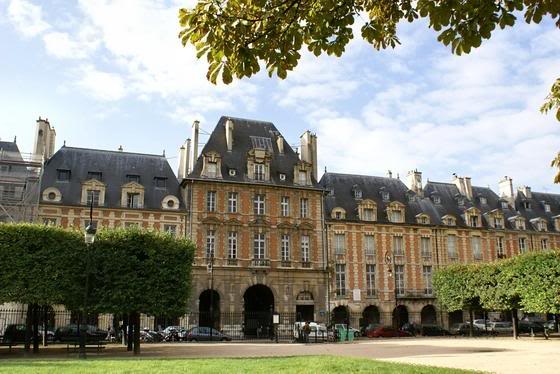
In total there are 36 houses, nine on each side, build in red brick, with large symmetric windows and steep roofs with those large chimneys that I like so much. Some says there are 39 houses in total though, hahaha, I guess it all depends what you call a 'house' I haven't even tried counting them, for me the total effect of it all was what took my breathe away.
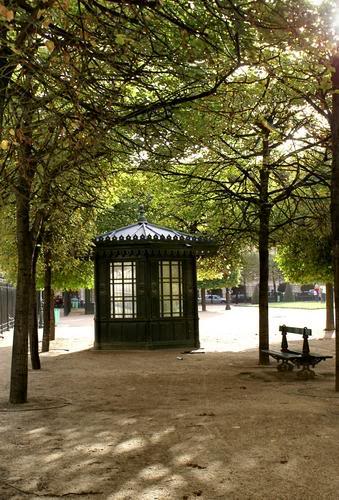
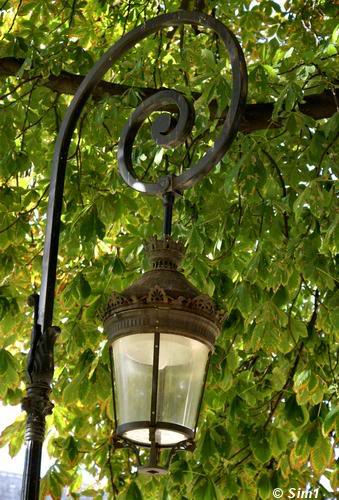
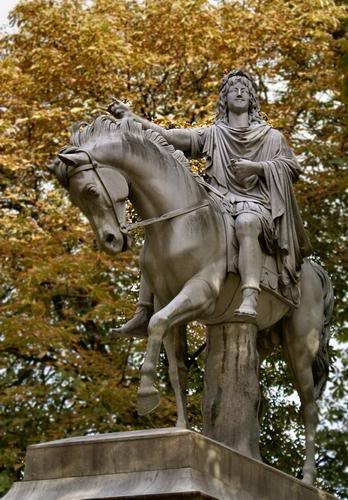
In 1605 - 1612 Henri IV had this beautiful square build and called it Place Royale. The square got its new name in 1799 and was renamed after the 'Department of the Vosges', which is a part of France near the German border. Of course the renaming had a good reason; money! The Vosges was the first to pay its taxes to a particular military campaign; and I guess that that is good enough reason as any to get the honour of having a square named after it ;-)
But let's forget all these facts about the square and get back to the here and now, and start to look around. The square, which is now a little park, is beautiful, with several fountains, symmetric paths crossing through the park from one side to the other, old trees that filter the light of the sun in a magical way, and a large statue of Louis XIII in the middle. Just sit down on one of the benches and take it all in. While looking around you probably be surprised by all the details you'll see, like the old lanterns placed around and on the square that caught my eye. They look so romantic and fit so perfectly in the atmosphere of it all.

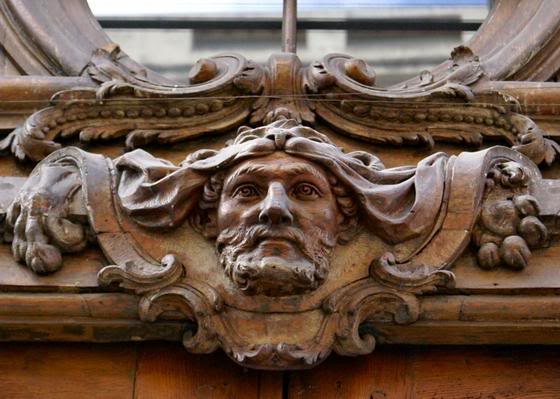
The Marais is a beautiful part of Paris and perfect to get 'lost' in. I loved wandering around in the small streets, look at all the houses, which have so many architectural details. Old doors, decorated with wonderful wooden carvings, a funny cornerstone build in the wall, balconies, balconies and more balconies, often filled with flowerpots. I just didn't know where to look anymore! In the old days the Marais used to be a marshland, which is really hard to believe when you walk around this area these days.
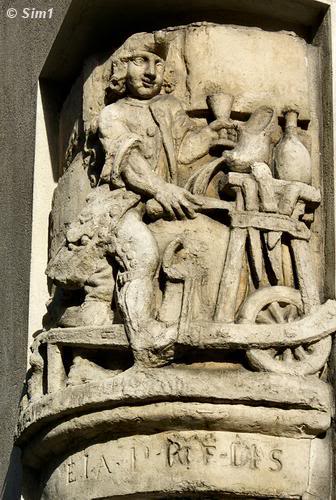
There are some famous houses in this area, like Hôtel des Francs-Boureois, Hôtel de Sully and Hôtel de Lamoignon, all which I planned to look at. But strangely enough I forgot about those plans within no time. The Marais had put its spell on me and made me love it as a whole. I forgot my urge to see specific houses; I just wanted to absorb it all. I was too amazed by all the details of the houses, the grandeur; all I wanted tot do was look around one more corner to see what surprises I would find there.
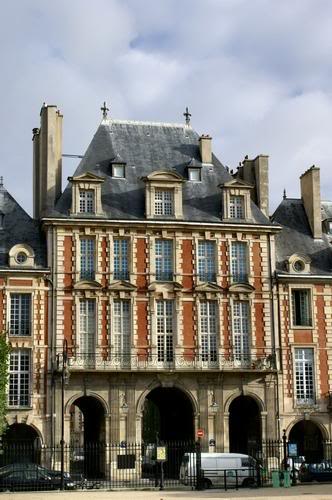
And one of those surprises in the Quarter of the Marais was the Musée Carnavalet. I know this is a very well-known museum, but I wasn't thinking of going here..... Until I stood right in front of it!
The museum is housed in 2 adjoining mansions from the 16th century and the little courtyard immediately grabbed my attention. The little formal garden and the architecture of the mansions (the Hôtel Le Peletier de St-Fargeau and the Hôtel Carnavalet) just drew me inside the courtyard, wanting to see more of it. At the gate, just before entering the courtyard, they were handing out tickets for a free entrance to the museum; it was all so tempting....
I got torn in two: I wanted to go inside, to see it all, the houses, the museum, it looked so wonderful and right up my alley. The museum is devoted to the history of Paris and inside you can see entire decorated rooms with panelling, furniture and many works of art. I was so tempted! But outside the sun was shining and more of Paris was waiting for me.....
The sunshine won in the end, and I didn't see more then a glimpse of the museum, making myself a promise to go back later. The weather forecast warned for rain, which would be perfect for visiting this museum..... but it didn't work out that way. it never rained, so I never went back. But on a next visit even the sun won't stop me to go here! And back in Paris I will certainly be again :-)

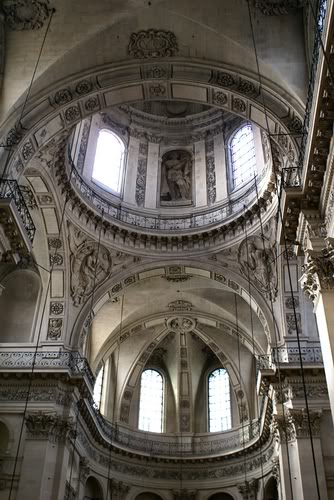
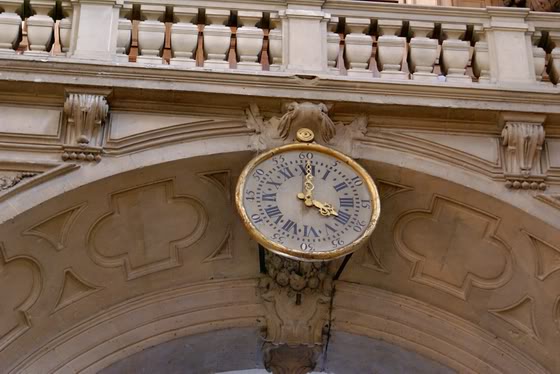
Our stroll through the Marais continued, and we ended up at the crossing where the Rue the St.Antoine splits into two and becomes the Rue de Rivoli and Rue Francois Miron. Here your eyes most likely will be drawn to the church St.Paul-St.Louis. I didn't think the façade of the building was so beautiful, but it did intrigue me, so I decided to take a look inside the church. And I was certainly not disappointed!
St.Paul-St.Louis is a Jesuit church and dates back to 1627. The one thing that strikes the most when entering this church is the 60 metres high dome. I loved the way the light filtered through the windows of the dome and I was just in awe by the architecture. The church is rather bare as it was looted and emptied during the Revolution, but the architecture compensates for all of that. To be honest: I didn't miss it at all, as I was so enchanted by the architecture.
There is some art left in the church, and the most famous piece is Delacroix's "Christ in the Garden of Olives." My attention however was drawn to this sculpture in the right wing of the church. The sunlight coming through the window touched the sculpture in a magical way, giving it an emotion and extra dimension that touched my heart.
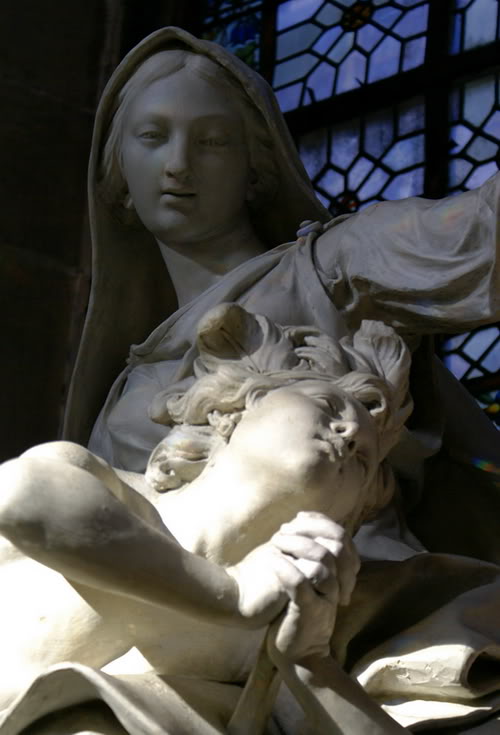
The church is open from Monday to Saturday: 8:00-19:30 and on Sundays from 15:99-19:00. I really can recommend going in here to take a look when you are in the area!

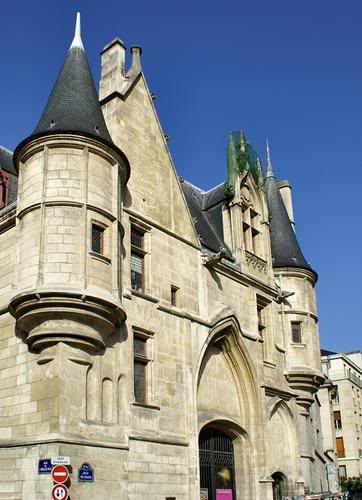
Probably more famous then the church I just mentioned, but certainly not better for me, is the Hôtel de Sens. The only thing I can say about it is that it looks 'different' with the little towers. But it didn't leave me in awe at all.
Hôtel de Sens is one of the 3 remaining medieval private residences in Paris and it was built between 1475 and 1507. Nowadays it houses Bibliothèque Forney, where you can admire decorative and fine arts, as well as industrial techniques. I haven't been inside, so I can't judge about that. I just can say that the outside is disappointing, and for me not worth making a detour for.


From the Marais we walked towards the west and entered into the areas also known as Beaubourg and Les Halles. I am not sure what to think of this part of Paris, I guess you love it or hate it. And I leaned more to the latter part then to the first. Although I did enjoy some features of it and it certainly could be called 'interesting'.
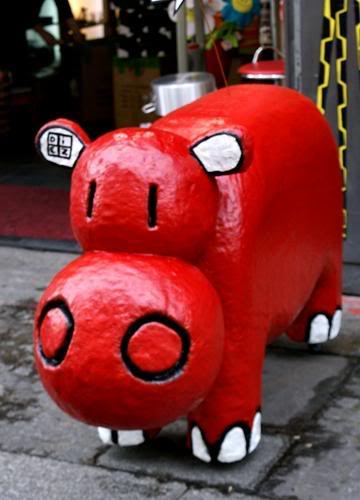
Beaubourg and Les Halles is a clash between modern and old, and I found it rather confusing. One moment I was standing in front of the modern architecture of the Centre Pompidou and a few steps later I was thrown back in time again, looking at the Fontaine des Innocents. But what drove me away from this area the most, was the more obvious poverty on the streets and neglect of the area. The shopping centre Les Halles for example, was once a pompous piece of architecture, but now it seemed to have had its best days. Ah well, I guess you get the drift by now: Beaubourg and Les Halles just didn't mesmerize me as much as the Marais did. But as I said it is 'interesting' and also lively, and therefore worth a visit. Hahaha, but in my case it would be a short one ;-)

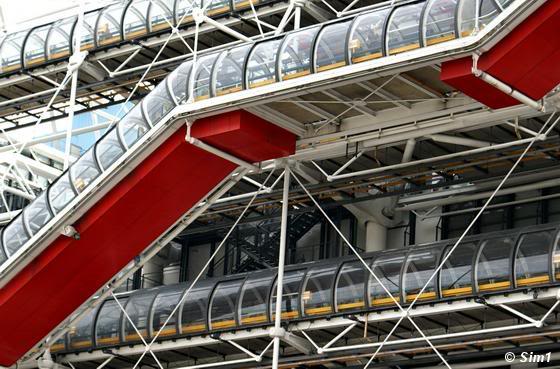
What drove me towards the Centre Georges Pompidou was more the outside then the inside of the building. I had heard so much about the architecture of this huge modern and contemporary art museum that I just had to see it for myself. The architects (Richard Roger, Renzo Piano and Gianfranco Franchin) literally turned the building inside out, placing all the framework, pipes, escalators, and structures on the outside. The effect is a mish mash of steel and glass, and a very unusual look to it. Did I like it? I actually don't know. I can't say I hated it, but I can't say I loved it either. Maybe 'interesting' would be the right word. Around the Centre Georges Pompidou you can see quite a few street artists, like these Mongolian Musicians in the second picture.
As modern and contemporary art isn't really my thing, I didn't go inside. But maybe I am the exception, as the museum draws in huge crowds every year. Millions of visitors admire the works of Matisse, Picasso and Miró. On their website you can find everything about opening times, entrance fee, the art works, and even read about the architecture of the building: www.centrepompidou.fr

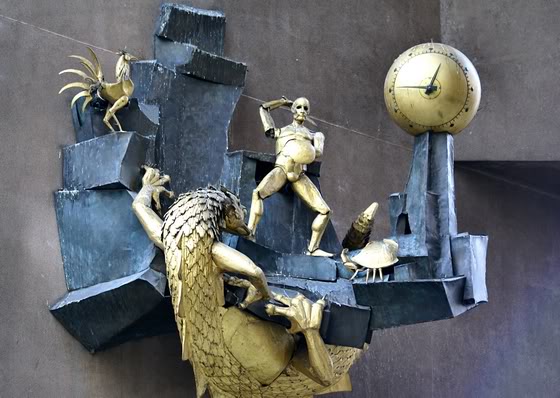
Le Défenseur du Temps is a fun clock, hidden away in the modern Quarter de L'Horloge and only a few steps away from the Centre Georges Pompidou. The clock is an interpretation of the 'defender of time' and supposed to have a 'show' every day at 2 o'clock and 6 o'clock. Well, this might be true if the clock worked, but it wasn't moving.... not even one minute! Quarter to one it was and quarter to one it stayed for quite some time. So after stirring at the motionless clock for a while we just gave up.
The mechanical sculptures wouldn't move today, and most likely not tomorrow either. No battles against the air, earth and water would show, no roaring sounds of earthquakes, storms or sea would play.... such a pity. It all sounded so fun and I really would have like to see this creation of Jaques Monastier at work. But his work seemed to be forgotten and neglected in this little alley of the Quarter de L'Horloge. All it functions for now is for gathering birdsh!t, as the clock was totally covered in it. For aesthetical reasons I cleaned it up a bit in the photo, hahaha, good that photoshop exists to make reality look a bit better at times ;-)

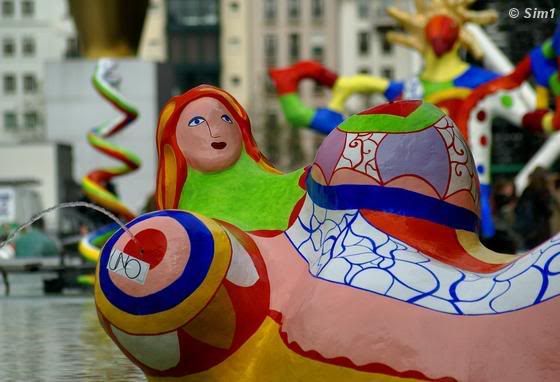
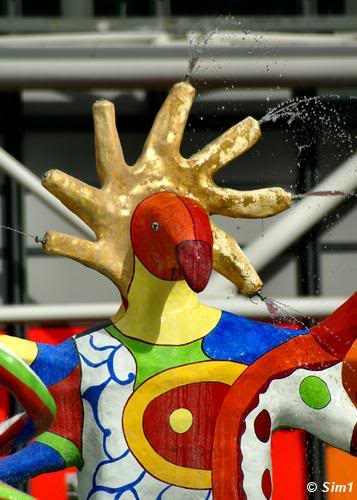
The ones that know me a bit, know that I love street art, so the Place Igor Stravinsky was a must for me. Beside the Centre Georges Pompidou is a little square, aligned with some bars/restaurants. But in the middle is this totally crazy fountain. I really can't imagine how one can create a fountain like this, but fun it is! Even with the rain drizzling slightly from the sky, the colour of the 'sculptures' in the fountain were as vivid as ever. Water was sprouting out of heads and any other body parts that you can imagine. Well, what can I say.... hahaha, just look at the photos and form your own opinion. I thought it was a fun fountain to see. The fountain is the first modern fountain in Paris and was created by Niki de Saint Phalle and Jean Tinguely.

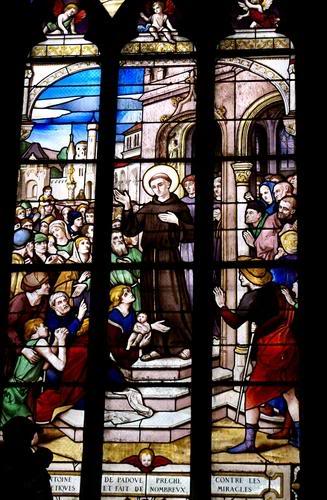
Old beside new, a clash between architecture, styles and times..... The old church of St.Merri is located directly beside the fun creative fountain of the Place Igor Stravinsky. And as you can imagine it is a real clash in architecture between these two.
The history of the church St.Merri dates back to the 7th century to a previous church on this same location called St-Médéric ((St-Merri). The church you can see here now was completed in 1552, and is build in Gothic style. If you are interested in seeing the oldest bell in Paris (1331), this is the place to be. But otherwise, I would suggest skipping a visit here. It's a church, but not all that special in my eyes. There is so much to see and do in Paris, and the church of St.Merri didn't make it on my toplist. So better walk on and spend your precious time elsewhere.
For the ones that would like to take a look inside: the church is open to visitors daily from 15:00 - 19:00. The entrance of the church is on the other side from the Place Igor Stravinsky, so you have to walk around it a bit to get in.

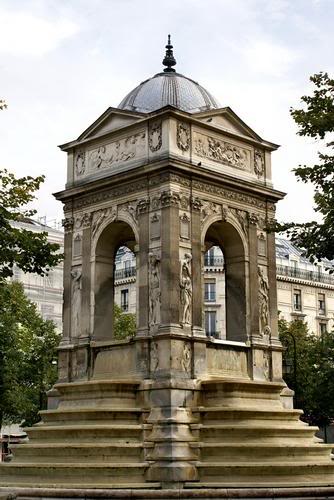
It's just a short walk from the church of St.Merri to get to the Square the Innocents with its fountain of the 16th century called "Fontaine des Innocents". I found it quite interesting to read that this is actually not the original place of the fountain. The fountain used be located on the Rue Saint-Denis, beside the graveyard "cimetière des Saint-Innocents". As the graveyard needed more space, they decided to move the fountain to here in 1788. Nowadays it is the only Renaissance fountain left in Paris and I am glad that they kept it! It is quite nice to see. The fountain was designed in 1549 by Pierre Lescot and in decorated in 1550 by Jean Goujon with the prominent sculptures.
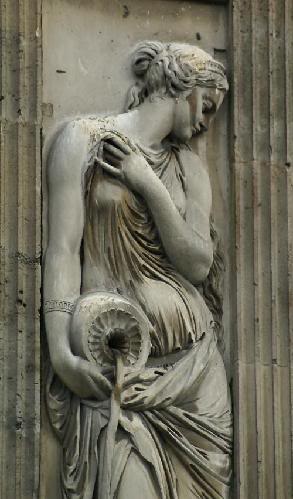
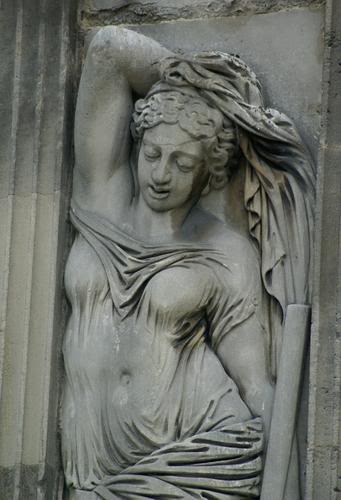
Each side of the fountain is a little roman arch, decorated on either side by two nymphs pouring water (see photos above). Above the arches you can see some playfull little angels (see below).
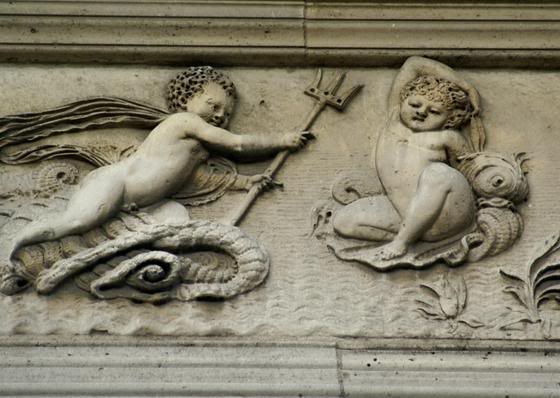

The Forum des Halles is an enormous underground shopping centre and hardl to avoid when walking around in this part of Paris. I am not really into shopping (yes, really!!), so normally I would avoid a place like this as much as possible. But, as the Forum les Halles is also known for having quite a few sculptures, fountains, and mosaics, I couldn't resist to stop by. But what a dumb choice that was! If I could redo my visit, I certainly wouldn't go here. Yes, I found some of the sculptures, but they were just a big disappointment.
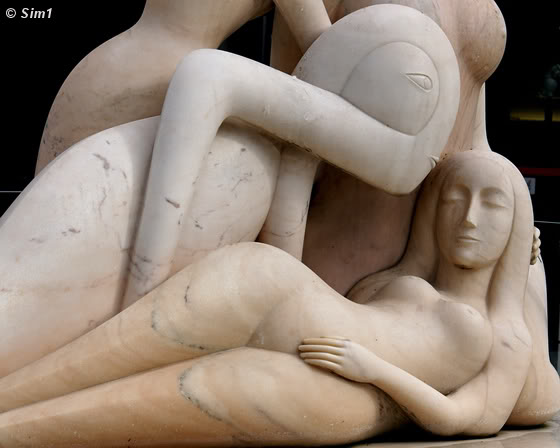
In the photo you can see the "Pygmalion" by Julio Silvia, located inside the Forum des Halles. This was one of the sculptures I was looking forward to see and my main reason to visit Les Halles. I really liked the sculpture, but I absolutely disliked the state it was in. The main part of the sculpture was covered in bird droppings, which didn't make this work of art look very appealing. In an attempt to capture some of the emotion of the sculpture I zoomed in quite a bit with my camera, resulting in this close-up photo. I am quite happy with the end result of the photo, but it does disguise the truth quite a bit. So my advice is: don't visit Les Halles if you are not a fan of shopping! Although the sculptures look quite beautiful on photos, the lack of maintenance has destroyed quite a bit of their appeal.

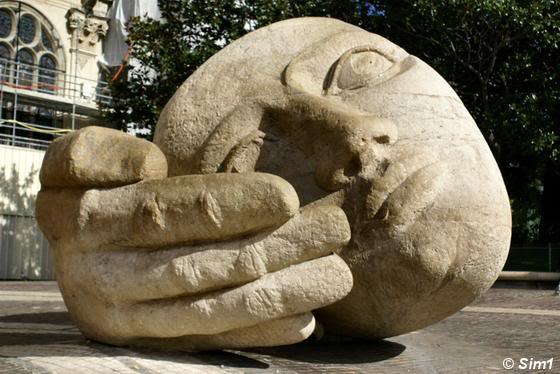
It's time to leave the area of Les Halles behind me, but before I do, there was one more thing on my wish list: St.Eustache! While preparing for my trip to Paris, I stumbled on some tips about this sculpture in front of the church of Saint Eustache, and it appealed to me right away. And of course I had to see it for myself!
The sculpture called "l'Ecoute", is enormous, and consists of a head with a hand in front of it. I really enjoyed this sculpture, which looks different, but fascinating from all angles. I captured this image on one of the rare moments that no one was sitting on the hand, hiding behind it, or posing in front of it. It certainly is a popular piece of art for both kids and adults! Somehow it captures the imagination of all and makes it is irresistible for people to be part of this sculpture. But 'empty' with no people on it or around is how I liked this statue, created by Henri de Miller, at its best.
In the additional photo below you can see the sculpture including people, which shows the real proportions of the statue. And yes, it is enormous! Don't miss having a look at it when you are in the area, I don't think you'll be disappointed. The square "Place René Cassin", where the statue is located, is also a popular area for people to take a break from their sightseeing tours, just to have a coffee, a sandwich or simply to rest the feet a bit. Long cement benches surround the square, and the lively atmosphere of this area makes it quite an enjoyable place to sit down for a few minutes.
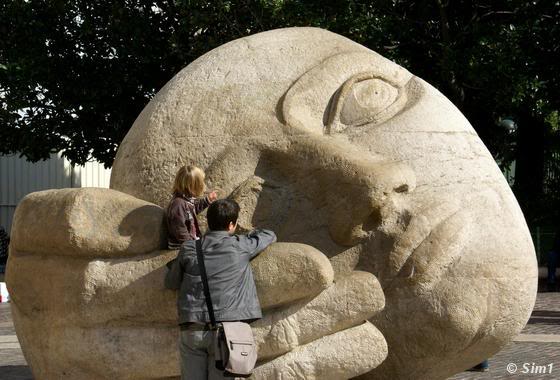

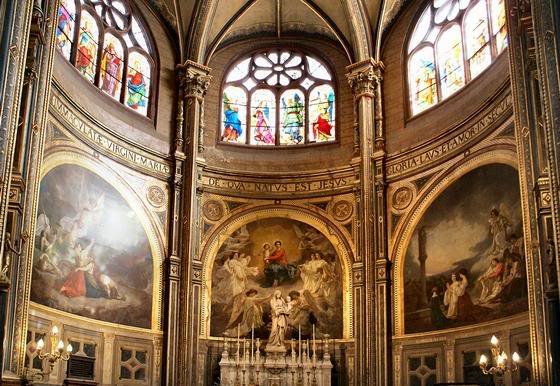
It was an unlucky day for me to visit the church of St-Eustache as a (rock) concert rehearsal was going on. Parts of the church were prohibited because of a special light and music show to be held that evening. And I was almost wishing for a set of ear-plugs, as the music was so loud. In short, the church didn't live up to its expectations due to all of this. I am sure it is a lovely church to visit under normal circumstances, but not on this particular day.
The church (build 1532 to 1637) has a renaissance interior although its architecture on the inside is gothic. Most striking are the pillars, arches and its choir. The stained glass windows in the choir are made after drawings of Philippe de Champaigne. On Sundays at 15:30 in the afternoon you can listen to organ music, something I have on my wish list for a next visit to Paris. The church of St-Eustache is open to the public from 9:30 to 19:00.

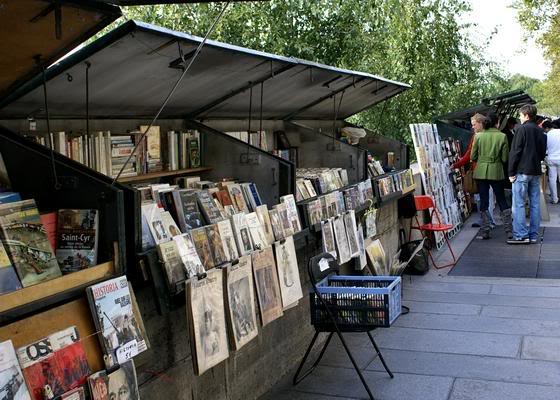
One of my favourite things to do in Paris, is to walk along the banks of the river Seine. This river winds its way through the heart of Paris, decorated on both sides by some of the most famous and beautiful buildings of the capital. On a sunny day it is so relaxing and wonderful to stroll along the banks of the river. On several places you'll come across little stalls selling books, posters, and of course the usual tourist things. The salesmen weren't pushy at all, so it was quite fun to browse through some of stalls and see what they had for sale.

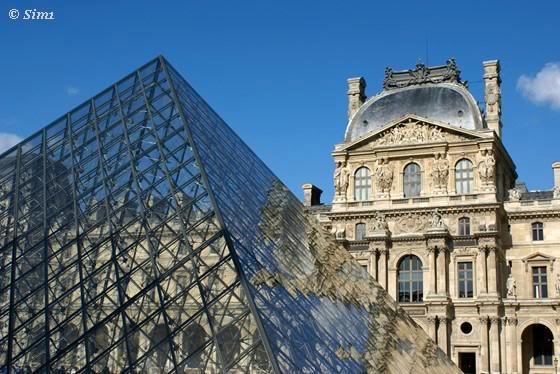
And then I was there.... at the Louvre! A Mecca for art lovers; an amazing complex, huge, overwhelming, intriguing, irresistible, but at the same time so intimidating....
When planning my Paris trip, a visit to the Louvre was on top of the list. Of course I had to see this! So much artwork; this would be a dream come true! To see the Mona Lisa, the Venus of Milo, and all the other famous and less famous works of art. But slowly doubt started to creep into my mind: I would never have enough time to see it all! It would be impossible to enjoy the art to its fullest when spending here a whole day. So I had to choose; but what to see? Or better said: what NOT to see! Sigh, I just couldn't choose...
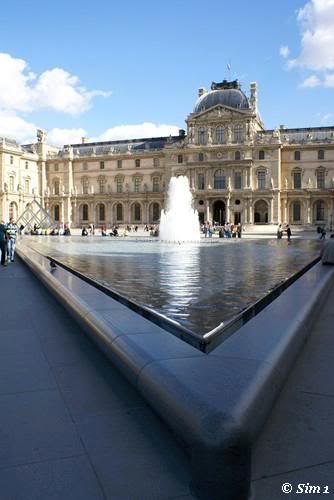
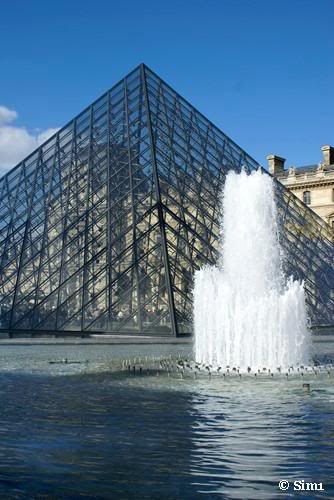
And now I am here, standing on the outside, slowly walking around it. And even that was already so impressive. But in the end I never went inside.....
I wonder how many people have this same thing. A place like the Louvre is a dream come true for all who love art. But then again it is an overkill, it is too much, it is too big. If I would live in Paris I know I would visit this place at least a few times a year, dividing it up into little sections, taking parts of it in and enjoying those to the fullest. But on my short visit to Paris, I decided not to go inside. Am I stupid? Probably yes. Am I regretting it? in a way: yes. I still want to see the Louvre!!! So in my mind I am secretly keeping my fingers crossed that my next visit to Paris I will at least have one rainy day. And that day will be my "Louvre-day"....
My visit to the Louvre wasn't a waste of time though; I thoroughly enjoyed seeing the whole complex from the outside. The beautiful buildings and its architecture; but more about that in the next tip.
If you are planning a visit to the Louvre, I can really recommend taking a look at their website. Here you can find all the information you need about the works of art, opening hours, and other practical info: The Louvre museum
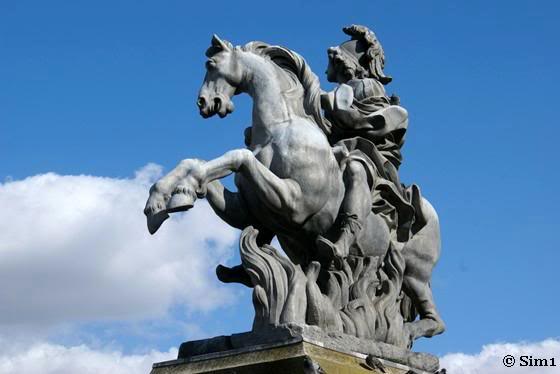

The Louvre is known for its famous its works of art, but it doesn't only contain art, it is a piece of art by itself! The buildings, that together make up the museum the Louvre, are an impressive sight to see in their own right. The history of the Louvre dates back to 1190, when King Philippe Auguste started building a defensive fortress here. Many changes and additions have been since then, making it the home of the kings and emperors of France. But since 1793 the history of the Louvre changed once again, and it became a museum.
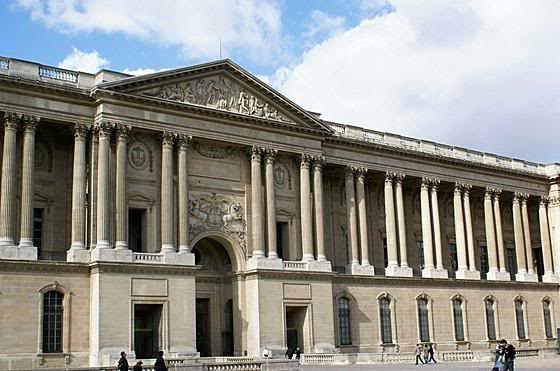
When I approached the Louvre from the east side, I was amazed by its size and architecture. On this side of the museum you can see "Perraults Colonnade" (photo above), designed by Claude Perrault in 1667. They created a monumental facade with double columns covering the entire upper story of the building.
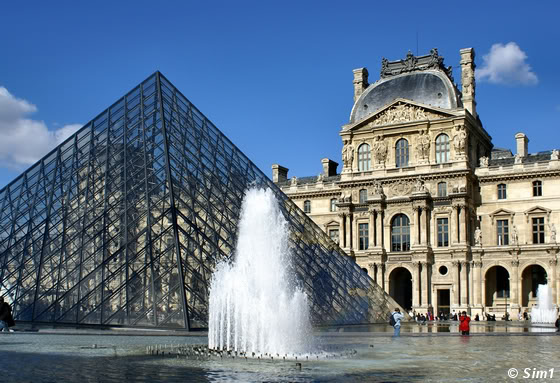
I walked on, and on and on, totally amazed by the enormity of this complex, until I finally reached the gate to get into the main square (Cour Napoleon). Here you can see a clash of architectural styles, which has been the topic of many debates. In my eyes the end result is a very successful merger between the old and the new, fascinating and amazing to see; an absolute feast for the eye! The majestic old facades of the historical buildings surround the huge square. And in the middle, as a total contrast in every way possible, stands a large glass pyramid. The pyramid was built in 1989, designed by I.M. Pei, and is now the main entrance to the museum (photo above).
In the photos below you can see part of the "Sully Wing" and of the "Richelieu Wing".
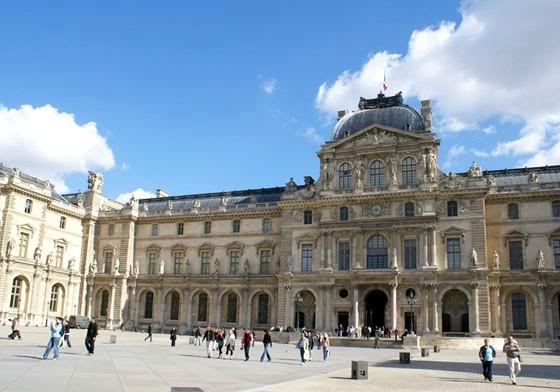
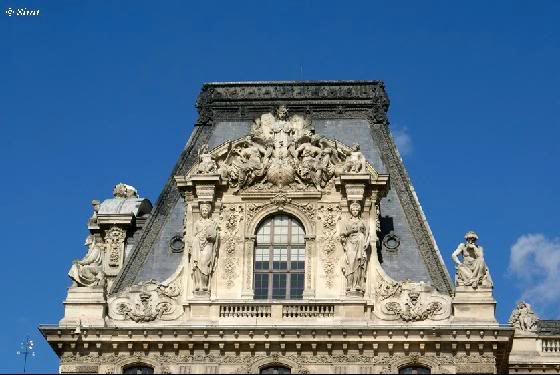

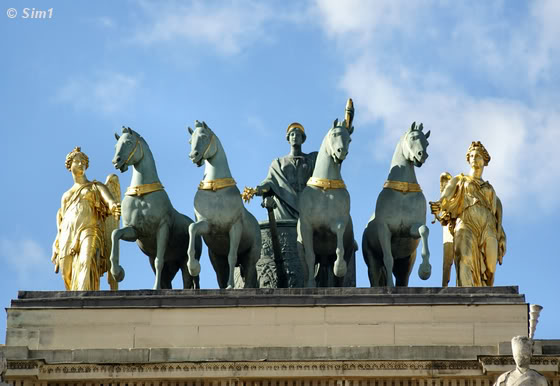
From the square at the Louvre you can't really miss seeing the Arc de Triomphe du Carrousel; as it is only a few steps away from the museum. And probably at first sight you think right away about the Arc de Triomphe de l'Etoile, which is the big and the famous triumphal arch everyone knows. This 'mini' Arc is 20 metres high and about 23 meters wide. It has one high arch, flanked by two smaller ones and the exterior is decorated by eight Corinthian rose-coloured granite columns.
On top you can see eight statues of soldiers of the Empire (photo below on the right). The whole structure is finished off with 4 bronze horses (photo above). And if you wonder if these bronze horses look familiar to you, you could be right! This statue originally comes from the facade of Basilica di San Marco in Venice, and when you have visited Venice, you will have most likely seen the exact same statue. The statue in Paris isn't the original though, as these famous Greek horses were returned to Venice in 1815.
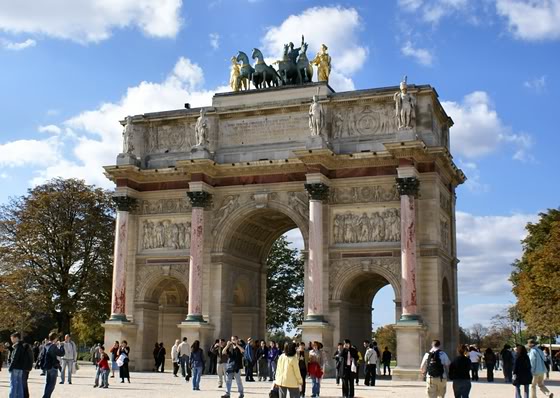
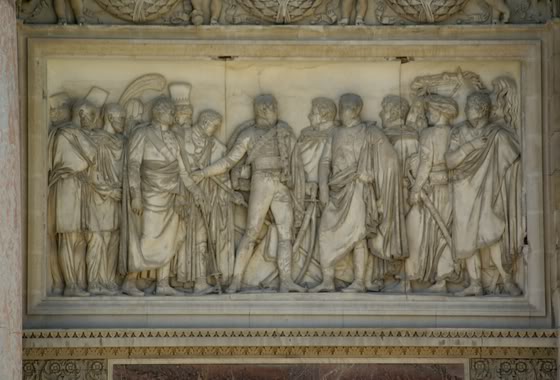
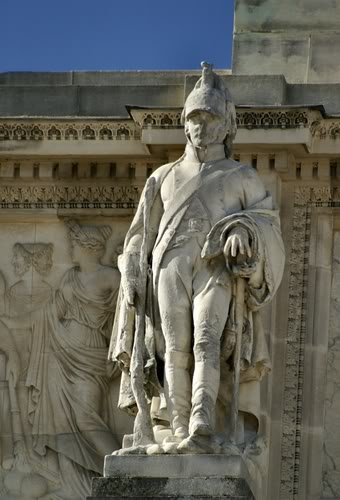
The famous Arc de Triomphe and this 'mini' one have a few things in common, they were both commissioned by Napoleon to commemorate France's military victories in 1805. They are also both part of the "Axe historique" ("grand historic axis") of Paris, which is an amazing nine-kilometre long linear route which dominates central and western Paris. The Arc de Triomphe du Carrousel is the easternmost part of the Grand Axis. So why don't we follow a bit of this "Axe Historique" and walk slowly westwards......

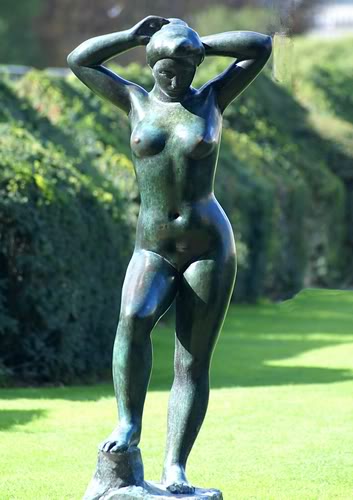
I am following the "Axe historique" (also called Voie Triomphale / Triumphal Way) to the west and immediately end up in another famous place in Paris: the "Jardin des Tuileries". This park is a wonderful green oasis, located in between the Louvre, with its Arc de Triomphe du Carrousel, and the impressive "Place de la Concorde". To the south you have the Seine and on the north side is one of Paris's most famous streets: the "Rue de Rivoli". Being surrounded by so many major attractions of Paris, it is not really a surprise that this park is very popular. It's the perfect place to relax and enjoy the sunshine.
Probably your feet are tired of walking so much around in Paris and they absolutely need a rest. Or you are taken by all the art in the Louvre and a nice and quiet moment in the park is the best way to let all the impressions of the day sink in. Whatever the reason might be, it is a park that does seem to draw in the crowds.
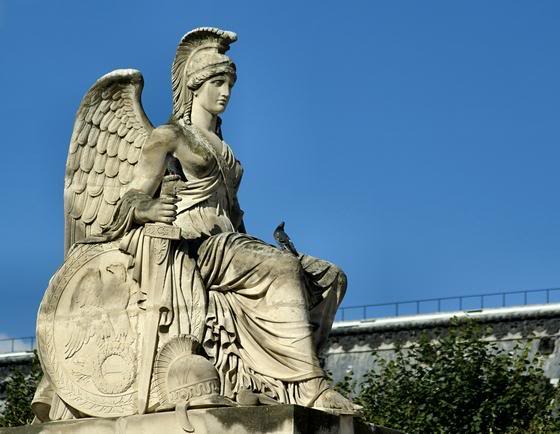
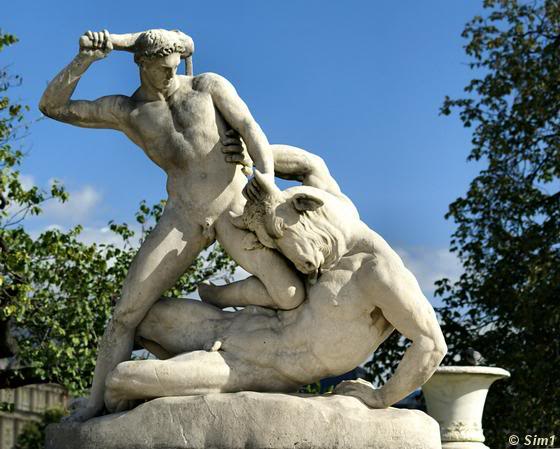
The gardens are a bit predictable with their formal style from the 17th century and as usual with a formal styled garden from that time, you can see quite a few statues here. The Tuileries Garden was designed by landscape architect Andre Le Notre in 1664 and is about 63 acres (25 hectares) in size.

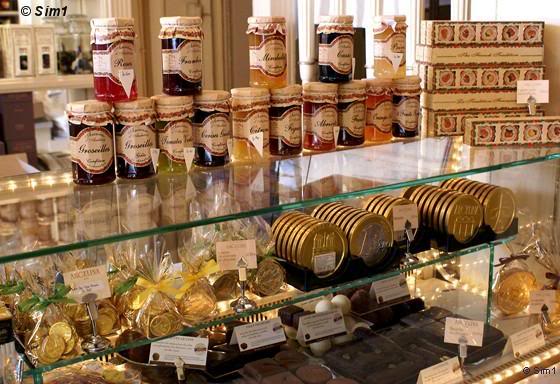
I probably would have walked through "Jardin des Tuileries" towards the "Place de la Concorde" in a normal case and avoided busy streets like the Rue de Rivoli. But... I just HAD to go to a famous 'Salon de Thé' here called 'Angelina', world famous for its hot chocolate. And it was absolutely worth the mini detour!!
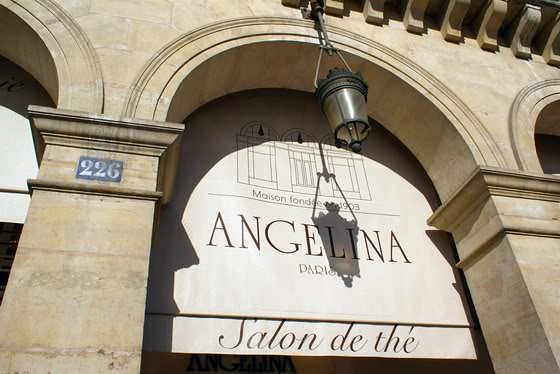
The Rue de Rivoli is not just 'a road', but probably one of the most famous roads in Paris. Its total length is quite impressive with 3060 metres. The street bears the name of one of Napoleon's early victories: the battle of Rivoli from 1797. Along the street you can see shops among some of the most fashionable in the world. The little part along de "Jardin des Tuileries" was certainly not some of the cheapest! But it was fun to do a bit of window shopping here, hahaha, even for a non-shopping fan like me ;-)

After our leisurely walk on the Rue de Rivoli, and my stomach happy after that delicious cup of hot chocolate at Angelina's, we are ready to explore more of Paris. And the Place the la Concorde is where we are heading to. Traffic is swirling around the square and the sun is smiling down on us. This is one of Paris' largest squares and a busy one as well. But the traffic couldn't hide the beauty of this place for me, even if it tried its best at doing so.
This octagon shaped square is dominated by a huge obelisk and I loved walking around here and taking it all in. Don't forget to go up to the Jardin the Tuileries before you cross the street towards the middle of the square though! From this point of view you have some really nice photo opportunities.... if you get here at the right time of the day that is. I arrived late afternoon, not the best of time of day. But when you go early during the day, you probably have the sun in your back, and you are able to get some lovely photos of the Place to Concorde, with the Eiffel tower in the background (see photo on the left).
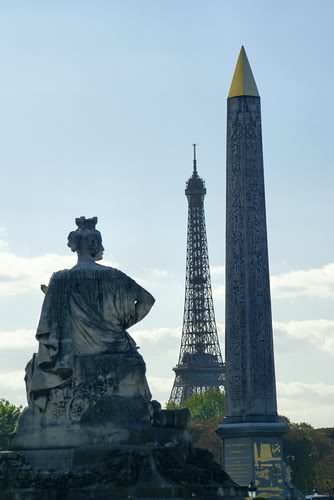
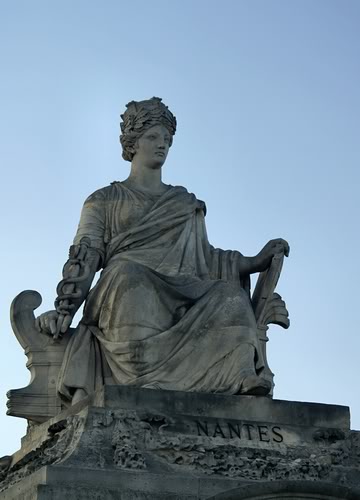
The statue in the foreground in the left photo is one of the 8 statues surrounding the square, created by Jacob Ignaz Hittorf. They are all placed in a corner of the octagon and represent the French cities of Lille, Strasbourg, Lyon, Marseille, Bordeaux, Nantes, Brest and Rouen. In the photo on the right you can see the statue representing Nantes.

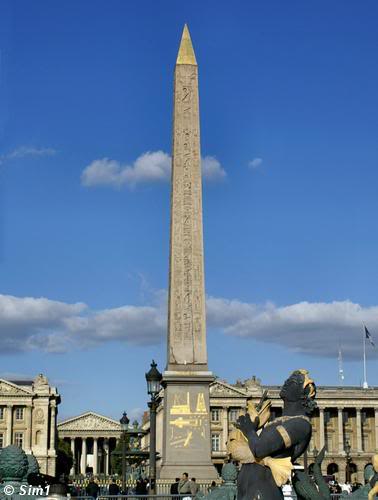
The Place de la Concorde is dominated by this huge Egyptian obelisk decorated with hieroglyphics in honour to the reign of the pharaoh Ramses II (photo 2). It's amazing to know that this obelisk once marked the entrance to the Luxor Temple. In 1829 France received this 3300 year old obelisk as a present from Egypt and King Louis-Philippe placed in the centre of the Place de la Concorde. On the pedestal (photo 3 and 4) you can see some of the drawings which explain how they managed to transport the obelisk to France. This impressive column is made of red granite and is 23 metres high. It used to be part of the Cleopatra's Needles; a trio of obelisks, which now are spread out over the word: one being right here in Paris and the other two in London and New York.
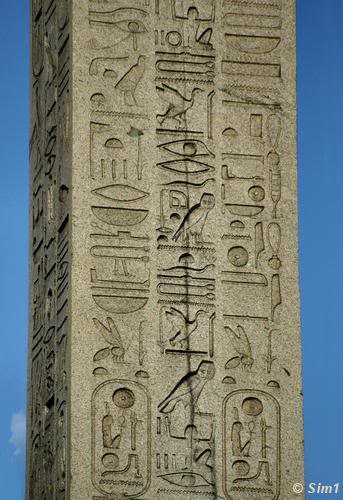
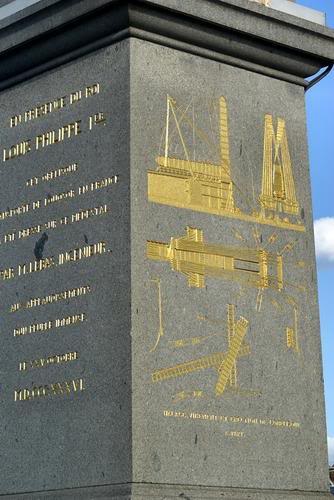
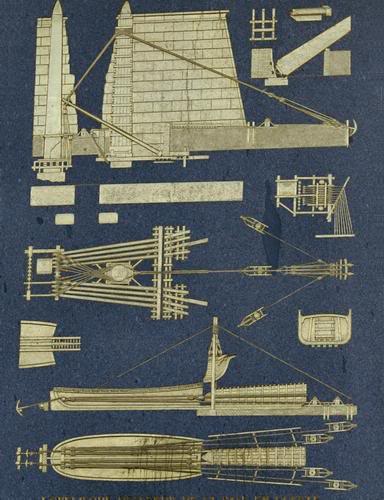
The Obélisque de Luxor and the Place the la Concorde are part of the "Axe historique" that I mentioned a bit earlier on in my tips. The Axe Historique (or also known as the "grand historic axis", "Voie Triomphale" or "Triumphal Way") is an amazing nine-kilometre long linear route which dominates central and western Paris. This route is consists some of Paris' most famous landmarks like the Louvre with its Arc de Triomphe du Carrousel, Jardin des Tuileries, Place de la Concorde, Arc de Triomphe and ends up at La Défense.

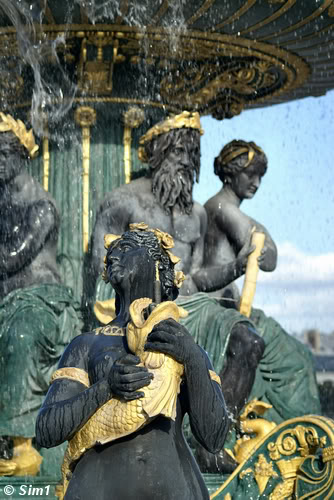
Besides the obelisk, you can also see two beautiful fountains in the middle of the square. The square dates back to 1755 and was designed by Ange-Jacques Gabriel and has had a rather turbulent past. The square wasn't called Place de la Concorde as we know it nowadays, but Place Louis XV, after the king. During the French Revolution (1789–1799) the square was renamed again and it is now known as the "Place de la Révolution". And that name might ring a bell to many of you, as that is the square were many famous people like King Louis XVI, Marie-Antionette and Robespierre were beheaded. After the revolution the square was renamed several times and in 1830 it finally got its current name 'Place de la Concorde'.
In 1836 Jacob Ignaz Hittorf redesigned the Place de la Concorde. And he is the one that added and designed these bronze fountains that I like so much to the square. One is called 'La fontaine des Mers' and the other one 'Elevation of the Maritime'. It's so much fun to watch these fountains, especially when they are working. And that felt like something of a lottery, because one moment the water was flowing gladly over the statues, into the water basin, and the next it was all quiet again. So be quick with your camera if you see the fountains working! The show might be over again before you know it.

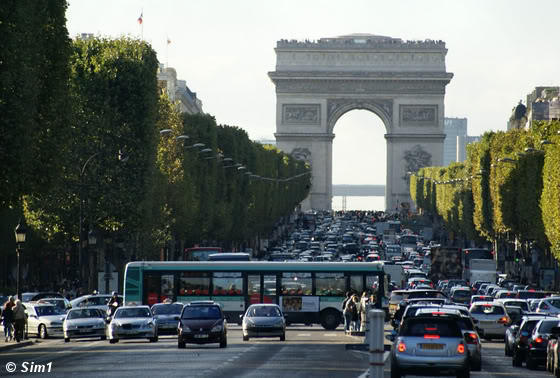
From the Place de la Concorde you can already see the famous Champs Elysées with its Arc de Triomphe. I didn't walk all the way to the arch this time though, as I have been here before. So for now (until a next visit to Paris), you have to do it with this distance shot of the arch. If you haven't been to the Arc de Triomphe before, I can really recommend in going here and especially climbing to the top. The views over Paris from the Arc de Triomphe are wonderful and in my opinion even better then the views from the Eiffel Tower.
The Arc de Triomphe de l'Etoile is the world's largest triumphal arch with its 51 meters in height and is 45 meters width. The structure was inspired by the Roman Arch of Titus; designed by Jean François Thérèse Chalgrin. It was commissioned by Napoleon to commemorate France's military victories in 1805.
Admission to the little museum inside the Arc de Triomphe including a visit to the rooftop is 6.10€. The Arc de Triomphe is open daily 9:30 a.m. - 6:30 p.m and in winter (Oct. 1 - March 31) daily 10 a.m. to 5:30 p.m. Closed on public holidays.

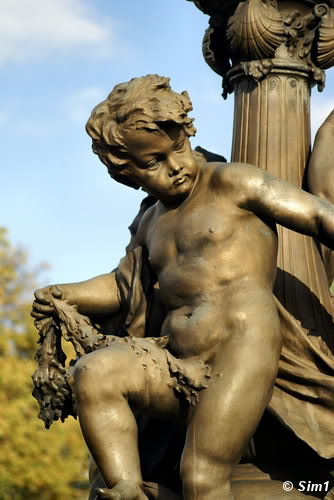
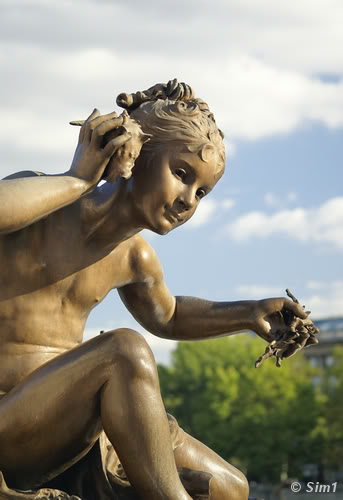
Instead of walking towards the Arc de Triomphe from the Place de la Concorde, we made a left turn, towards the river Seine and the famous Pont Alexandre III. A bridge I just HAD to see! The bridge is famous for its exuberant Art Nouveau lamps, cherubs and nymphs. It is just unbelievable to see all the decorations put on just one bridge! You can argue if you can call this 'beautiful', but it is surely special. And I loved it!
The bridge was build between 1896 and 1900 by the architects Résal and Alby. The inauguration of the bridge was just in time for the Universal Exposition of 1900. The first stone was placed in October 1896 by Tsar Nicholas II and the bridge was named after his father Tsar Alexander III.
In the photos you can se some of the sculptures ornamenting the bridge. In the left photo above for example, you can see one of the sculptures at the base of the lamps on the bridge. These statues are by Henri Désiré Gauquié. In the right photo above: you can see a sculpture by Léopold Morice: Young girl with seashell. Photo on the left below: one of the lamps decorating the bridge. Middle photo below: you can see a decoration on the outside of the bridge, by Abel Poulin and Grandzlin. And to the right off it is a fun little detail: a little lizzard watching the bridge.
The Pont Alexandre III is located in between the Grand and Petit Palais on the right bank of the river Seine and the Hôtel des Invalides on the left bank of the river.
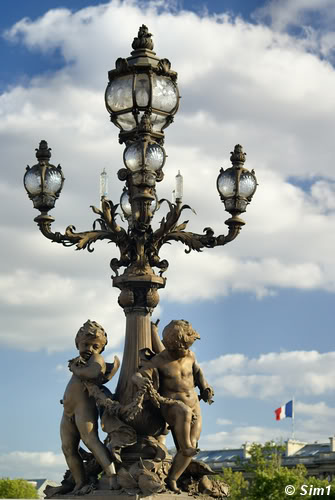
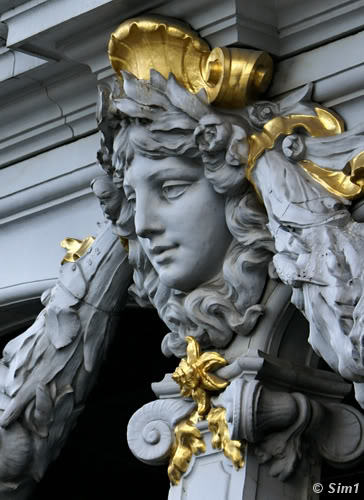
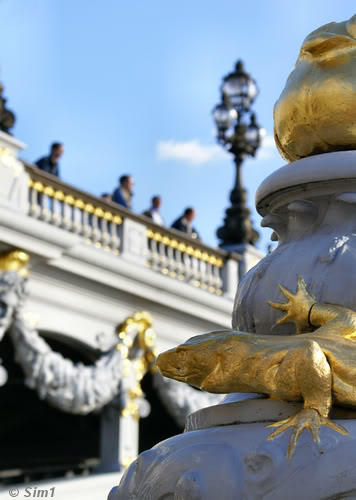

I've showed you quite a bit of the details of the Pont Alexandre III up to now, so now it is time to show a bit of the bigger picture. The two main landmarks around the Pont Alexandre are the Grand and Petit Palais on the right bank of the river Seine and the Hôtel des Invalides on the left side.
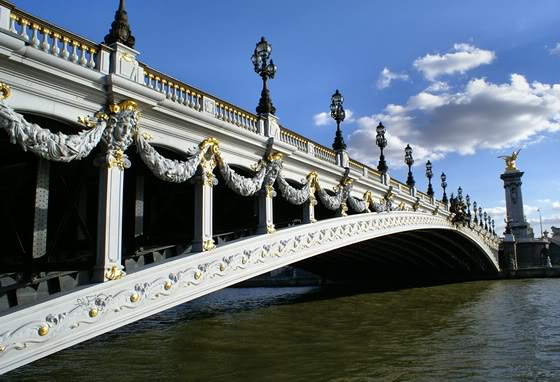
One of the golden rules the architects of the bridge had to abide to was not to make the bridge too high and obstruct the view on the Invalides and Champs-Elysées. And the result is this wonderful low bridge of only 6 metres high, 40 meters wide and 107.5 meters long (photo above). The only part of the bridge that really goes high up in the air is the four corner pillars of granite, which are 17 metres high (photos below) and decorated with gilded statues (below right).
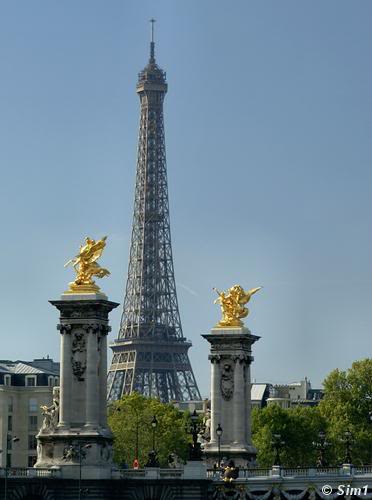
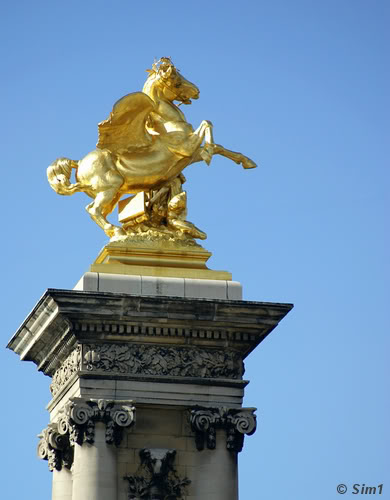

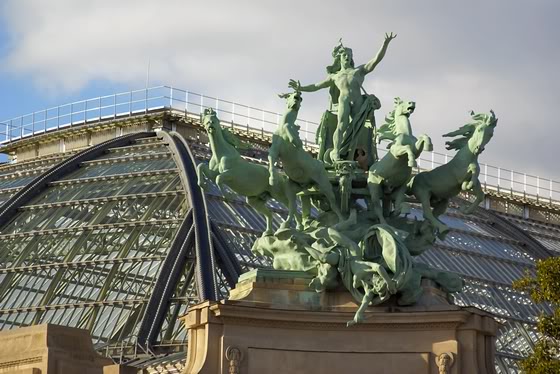
From the Pont Alexandre III you can clearly see the impressive glass roof of the Grand Palais, which made me curious enough to follow the Avenue Winston Churchill to have a closer look at it. I really would love to see this building in the evenings when the roof is all lite up, that must be fantastic. Unfortunately my time in Paris was too limited to squeeze that, but that gives me something to look forward to on a next visit.
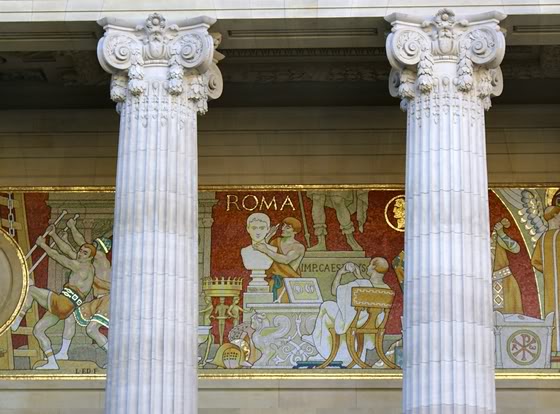
The Grand Palais was build at the same time as the Pont Alexandre III, in 1900 and is an impressive example of early 20th century Art Noveau. It is a large glass exhibition hall, built for the Paris Exhibition. Besides these exhibitions, the Grand Palais also hosts trade fairs and a museum: the Palais de la Découverte. Here you can discover the world of elementary and new sciences through hands-on interactive experiences.

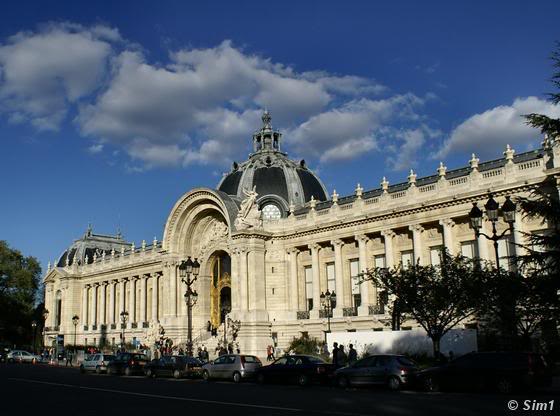
Across the street from the Grand Palais, you can see the Petit Palais. This beautiful building was also built for the Paris Exhibition of 1900. Somehow the Petit Palais appealed to me much more then its bigger brother the Grand Palais. The building looked charming and I was so tempted to go inside and have a look there. The building was designed by architect Charles Giraul and now houses the Musée des Beaux-Arts de la Ville de Paris. One of the major collections of this museum is the Dutuit Collection of Medieval and Renaissance paintings. This is a rich collection of antiques and mediaeval objects and famous Flemish and Dutch paintings. But that is not all the museum has to offer! The museum also houses the Tuck Collection of 18th century furniture and the City of Paris collection of works by French artists, such as Jean Ingres, Eugène Delacroix and Gustave Courbet. Something I really would love to see one day!
The museum is open from 10 am to 5 :40 pm. Closed on Mondays.

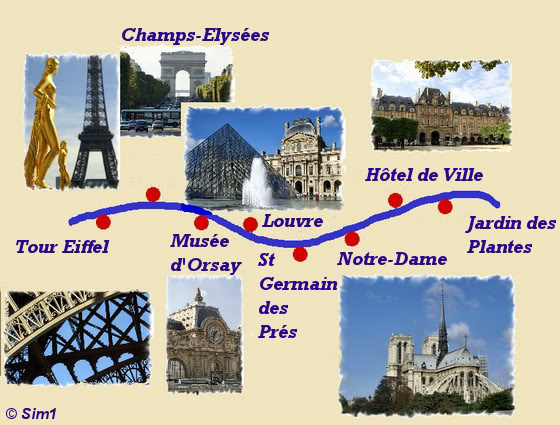
My next destination is a bit further to the west along to the river Seine, so why not jump on the Batobus for a comfortable and lovely tour on the river Seine to get there?
The Batobus is a hop-on hop-off boat, with eight stops along the river Seine. I thought it was ideal to hop on board at one point, and hop off at the next place that I wanted to see. You can buy a ticket for the day (or longer) and hop on and off as much as you like.
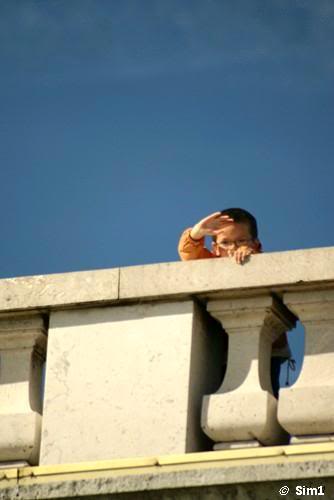
We jokingly called it the "Burpobus" instead of the "Batobus". After having had a wonderful lunch in one of Paris' cafes and restaurants, we were too lazy to walk or do anything. But we didn't want to waste any of our precious time in Paris either..... oops, that's going to be a problem!! But, we discovered the perfect solution to this problem! Take the Burpobus and burp out for a while ;-) You won't feel lazy, you won't miss anything of Paris; all the views will flow by in front of you, and your feet and stomach can have the rest they so desperately want without making you feel guilty :-))
In my transportation tip I'll write a bit more practical tips about the Batobus. In the first photo you can see a little map with all the stops of the Batobus. But no more time to waste: it's almost time to hop off the boat again as I can already see the Eiffel Tower in the distance: our next stop for the day!
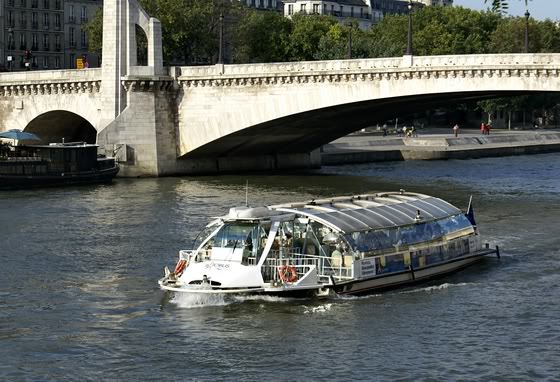

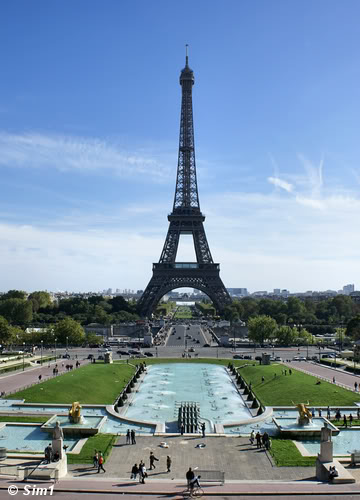
The Batobus will drop you off at the base of the Eiffel Tower, but instead of running directly towards this famous monument, I opted to cross the bridge over the River Seine first to visit the Palais de Chaillot and its Trocadéro Fountains.
The photo was taken from the top level at the Palais de Chaillot, which will give you a good overview over the Trocadero Fountain. The fountain can be quite spectacular when it is working (especially at night when it is lit up), but on this hot late summer day, the fountains were quiet, making it a bit boring. But there are some benches on either side of the fountain, some of them perfectly situated on a shady spot under the trees. A perfect place to take a little rest and absorb in all the views before moving up the stairs of the Palais de Chaillot.

The Palais de Chaillot is a huge rather pompous building and was built by architects Carlu, Boileau and Azema for the Exposition Internationale of 1937. The Palais de Chaillot is now home to several museums, all undoubtedly worth a visit. But I concentrated just on the outside and the views on this gorgeous late summer day.
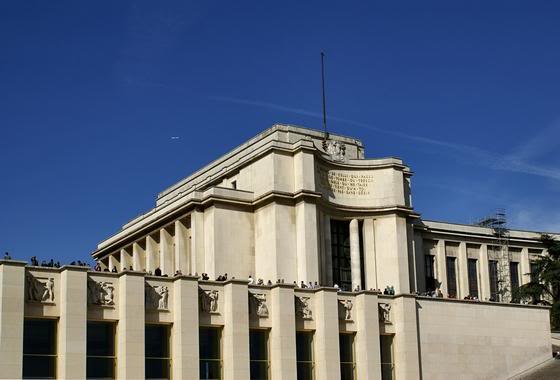
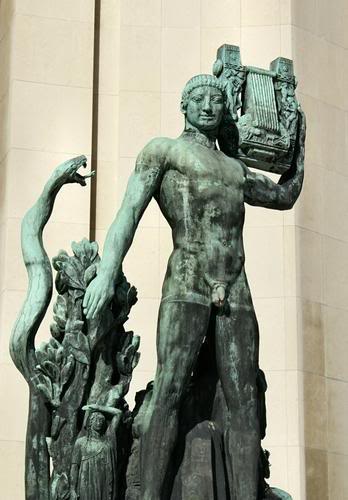
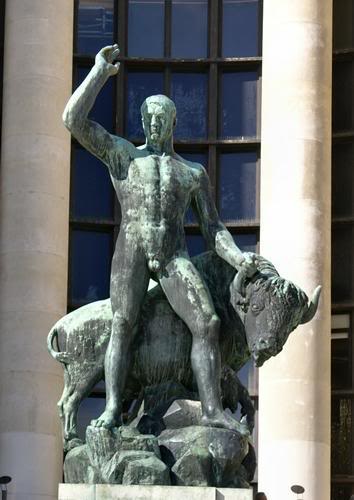
The museums (and theater) you can visit here are:
* the Musée national de la Marine (naval museum)
* the Musée de l'Homme (ethnology)
* the Musée national des Monuments français in the eastern (Paris) wing
* Théâtre national de Chaillot, a theater below the esplanade.
In the two additional photos you can see two of the enormous statues that you'll pass on your way up the stairs. The architecture of the Palais de Chaillot is not really my cup of tea, but it the enormity of the complex is quite overwhelming.

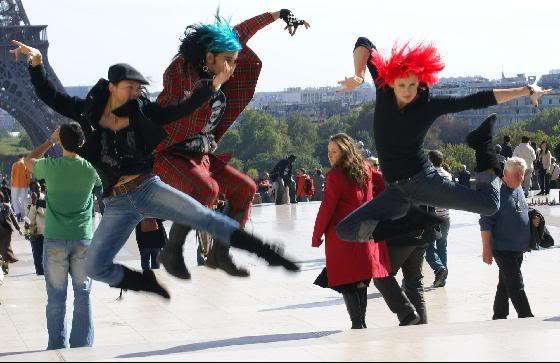
We are now at the top, and in the middle of the Place des Droits de l'homme (Human Rights Square), a square that is alive and here is where the real fun starts. The views from here over the Eiffel Tower are fantastic, and the photo opportunities are endless. The Palais the Chaillot embraces the square with its two wings on either side, leaving one side open, creating the wonderful views from this high platform, on the Trocadero fountain below, towards the Eiffeltower and even further away the Champ des Mars.
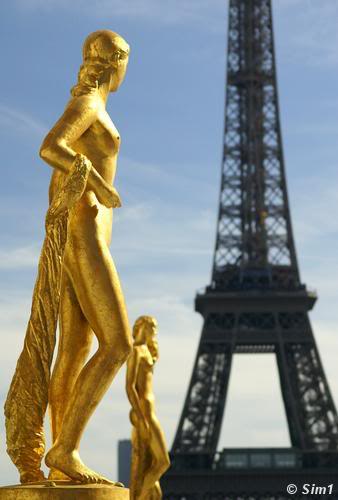
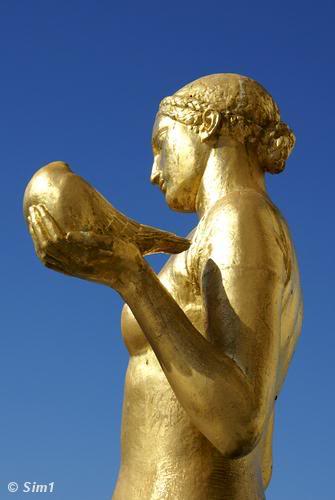
The square is crowded with people, and that attracts of course your obvious annoying street sellers, trying to sell you the most crazy kitsch pieces of souvenirs. The crazy souvenirs brought a smile to my face, but my eyes were quickly distracted by these bronze statues that align the square on either side. Around 8 or 10 of them in total if I am correct, and all slightly different, created by different artists. They make the perfect foreground and contrast when trying to capture a photo of the Eiffel Tower.

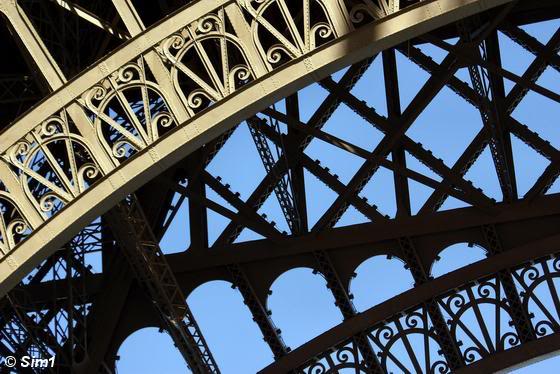
What can I say about this 324 m (1070 ft) high structure that hasn't been said before? Not much I guess, as everyone knows the Eiffel Tower. This world famous landmark was built in 1889 and was named after its designer, engineer Gustave Eiffel. It is now one of the worlds biggest tourist traps, but it still keeps in drawing the crowds, around 6,5 million people yearly. An amazing number;, which makes it all more the logical that the queues to go up the tower are so very long. And yes, I've been one of those people as well! On my first visit to Paris I just HAD to go up the tower. And I really enjoyed it! But that was probably mostly due to the fact of the idea it was the "Eiffel Tower" I went up, not especially because of the views from here.
This second time I gladly skipped the long wait in line, and pleased myself by just looking at it from the front, the side and below. The structure still amazes me, so it was fun to be here a second time around. But I don't think I will ever go up there again. The queue on this bright sunny day was endless, 45 minutes a sign above the cash register said. I guess visiting Paris and especially the Eiffel Tower requires a bit of patience! ;-)
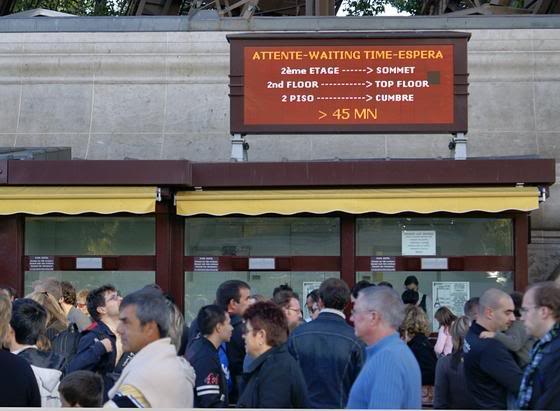
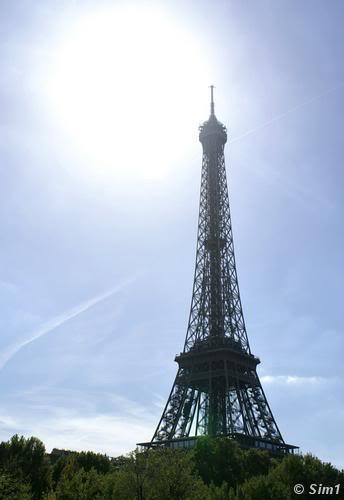
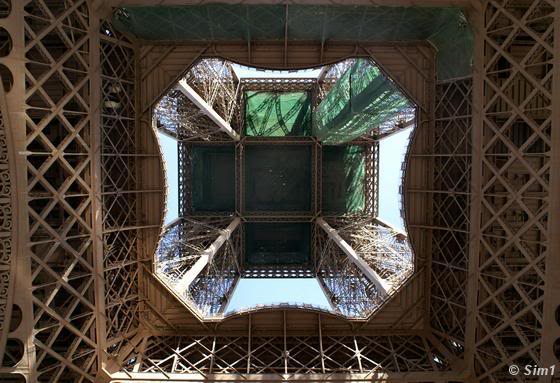
While you stand and wait here in line, or just stare up at this enormous structure, do watch out of pickpocketers and scammers. An area like this, filled with tourists, is a gold-mine and dream come true for those who want to earn a buck or two from tourists. The police do seem to keep control over the area, as they were chasing a couple of scammers on bicycle when we were there.

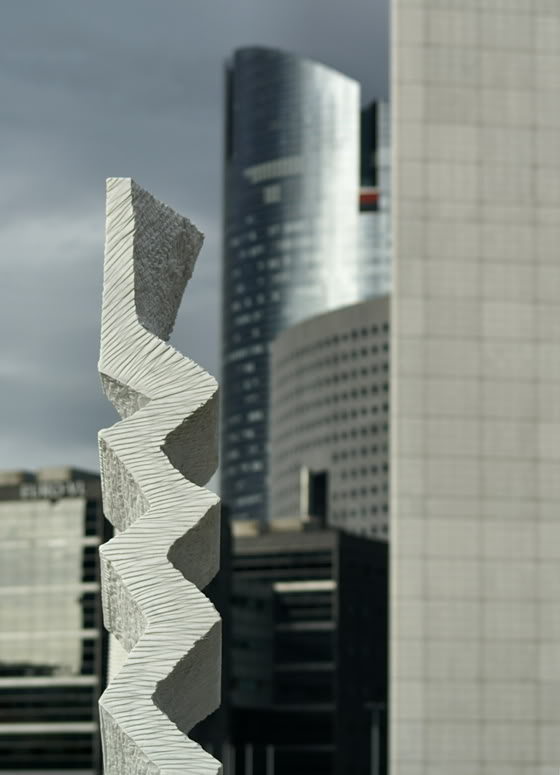
The most western point of my trip to Paris is a visit to the biggest business district in Europe called La Défense. It is outside of central Paris, but easily reached by the metro. It's a place that attracted me for its abstract appearance. Clean large office buildings, lots of statues and modern art, and then there is of course this relatively new huge landmark: La Grande Arche!
La Grande Arche marks the end of the "Axe historique" that I mentioned a bit earlier on in my tips. The Axe Historique (or also known as the "grand historic axis", "Voie Triomphale" or "Triumphal Way") is an amazing nine-kilometre long linear route which dominates central and western Paris. This route is consists some of Paris' most famous landmarks like the Louvre with its Arc de Triomphe du Carrousel, Jardin des Tuileries, Place de la Concorde, Arc de Triomphe and ends up right her at La Défense with its Grande Arche.
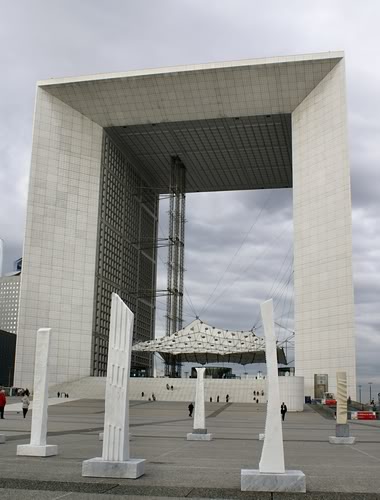
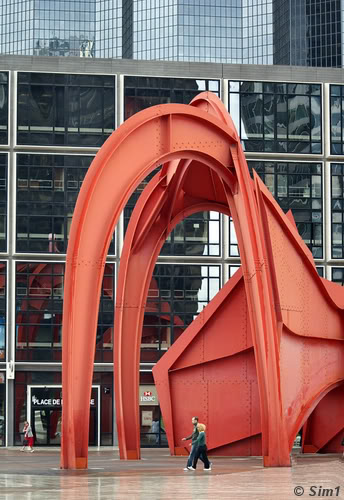
The day was grey, the sun had disappeared and the clouds and an occassional drizzle of rain had taken over. This was not the day and not the weather to visit La Défense. The large office buildings were like huge chameleons, taking on the grey boring colour of the clouds. The sharp contrast between the blue sky and the glittering modern architecture was missing. La Défense was missing the sparkle I had hoped for. My camera clicked, but without a smile. It could have been so good, now it was just one big disappointment. La Défense is not the easiest attraction (if you can call it that) in Paris to enjoy. It does need the sun to shine! And you do have to love your modern art and architecture to enjoy this place.

Let's hop on the metro again and return to the city centre. I am now on the other side of the River Seine, and I'll explore this area a bit more and end this page with my descriptions of Ile de la Cité.
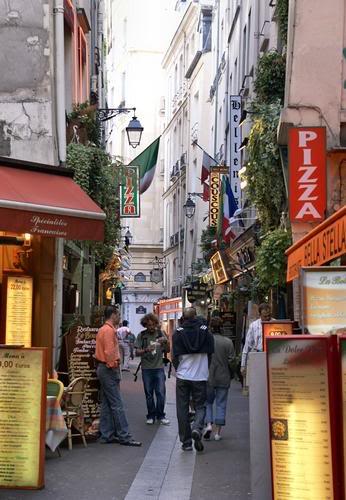
I'll start my tour at the Latin Quarter, which is a 100% contrasts to my previous destination La Défense. No modern buildings here, business men or modern architecture. But instead small windy streets, lots and lots of tourists, historical buildings and a thousand or more little (tourist) restaurants and bistros to choose from. Since The Latin Quarter has been dominated by the University of Paris, La Sorbonne, it has acquired its name from the early Latin-speaking students.
Some of the highlights of this area are the Institut du Monde Arabe, Musée du Moyen Age (Middle Ages) or also called the Musée de Cluny, the Muséum National d'Histoire Naturelle in the Jardin des Plantes or how about the Le Panthéon and the churches of St-Séverin and St.Julien-le-Pauvre. My personal favourites of the Latin Quarter were my visits to the Musée de Cluny and lunch at a fantastic little winebar on the edge of the district called L'Ecluse.

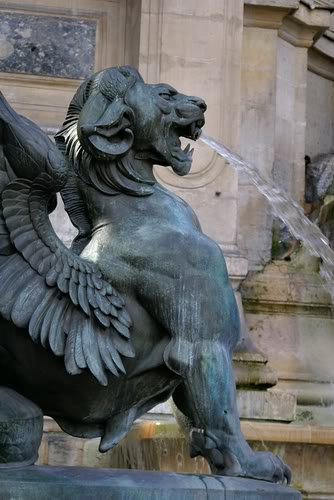
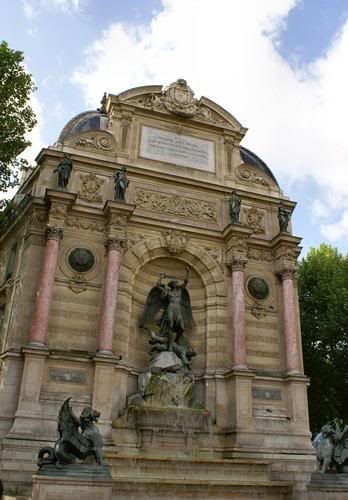
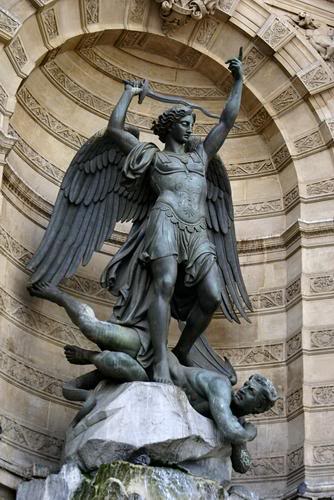
In the centre of the Quartier Latin, just west of the tourist heart at the rue de la Huchette, and close to the River Seine, you can see the Place St-Michel. This is a small triangular square, with a large fountain that undoubtedly will draw your attention. The fountain was created by the French sculptor Davioud in 1860. The bronze sculpture in the middle is made by Duret, who was inspired by a Raphaël painting in the Louvre which depicts Saint Michel, protector of France, slaying a dragon (photo 2). On either side of the fountain you can see two large water spitting lion-like creatures (photo 1).

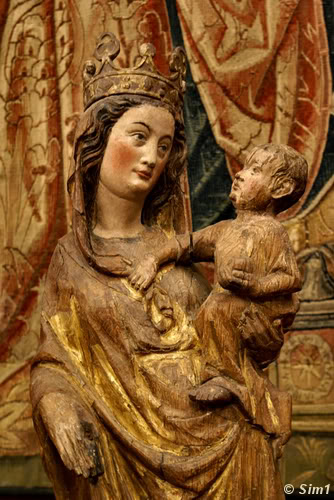
If you have the time and you enjoy seeing works of art and learning more about the history of the Middle Ages, the Musée de Cluny is the place for you! I really loved this museum as it isn't too big and gives a wonderful overview over the Middle Ages in France. Unfortunately I ran out of time for the day during my visit and had to haste my way through the museum, but it has left me with a wonderful impression. The name of the museum is a bit confusing as it is sometimes referred to as the Musée de Cluny and sometimes as the Musée National du Moyen Âge (Museum of the Middle Ages).
The museum houses a variety of important artifacts dating to the Middle Ages. It is in particular known for its wonderful tapestry collection. The most famous of them all is the "La Dame à la Licorne" (The Lady and the Unicorn) dating back to the 15th century. To my surprise there is not just one "Lady and the Unicorn", but it is a serie of in total 6 wall covering tapestries. In the photos below you can see two of these, the one on the left is called "Sight" and to the right is "To My Only Desire". It's quite amazing to stand in this room and be surrounded by the bright red colours of these 6 tapestries.
Photography is allowed inside the museum, but only without flash. The rooms are rather dark, so you do need a steady hand to be able to take some photos.
Opening hours:
Daily (except Tuesday), from 9:15 to 5:45, Desk closes at 5:15
Closed 1 January, 1 May and 25 December.
Admission Fee: 6,5 €
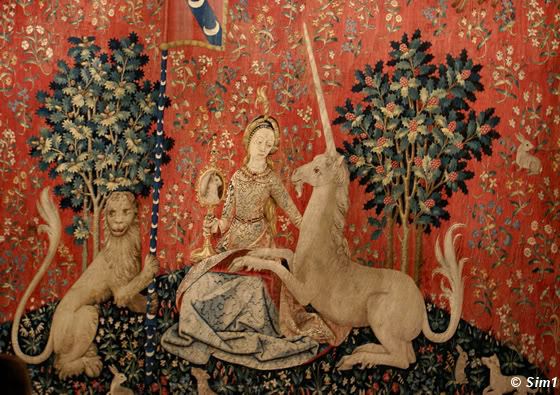
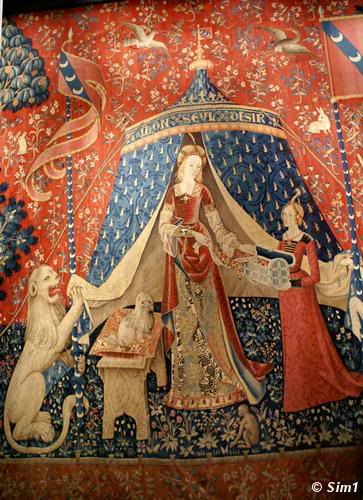
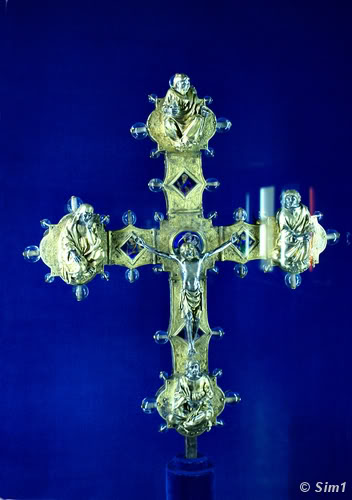
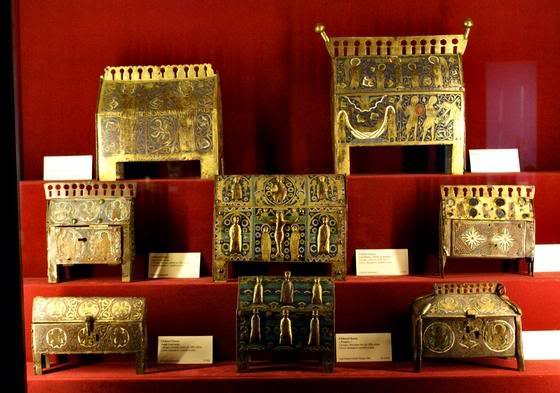

A visit to Paris would probably not be complete without a visit of the Notre Dame de Paris. Or at least that seems to be the case when reading about Paris. But is it true? Is it the must see everyone claims that it is? That could be discussed and everyone has probably his own opinion about it. For me it wasn't the best, but more about that later. Let me tell you a bit about the history and background of this famous cathedral first.
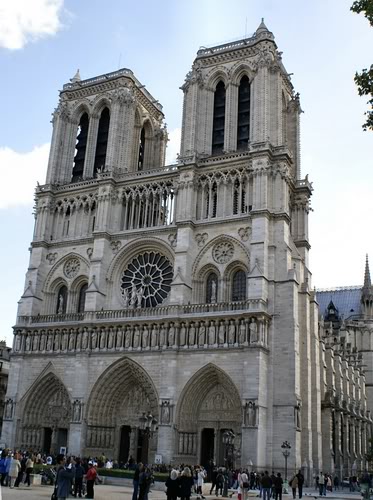
The Notre Dame wasn't the first place of worship to be built on this particular spot in the heart of Paris. Previously it were the Celts that had their sacred ground here, and after that a Roman temple worshipping Jupiter, a Christian basilica and finally a Romanesque church were build on this spot. But in 1163 the building of the famous Notre-Dame started. It took almost 200 years, until 1345, before the cathedral was finally finished.
During its almost 900 years of history the cathedral witnessed a lot of major events, like the crowning of Henry VI of England to the King of France in 1431 and the crowning of Napoleon Bonaparte as Emperor on December 1, 1804. But not all of its history has been so glamorous. From 1793 the cathedral went through some of its saddest years, when during the French Revolution many of its treasures were destroyed or stolen and sculptures were smashed and destroyed. But luckily the cathedral was restored several times during its life.

When you stand in front of the Notre Dame it is hard to resist not to take a look inside, so of course that was what I did as well. The cathedral is big, and without a doubt impressive on the inside. But for me it missed the 'spark' I did feel in so many other churches, maybe those churches and cathedrals were not nearly as famous as the Notre-Dame, but they feel more intact and original then this one.
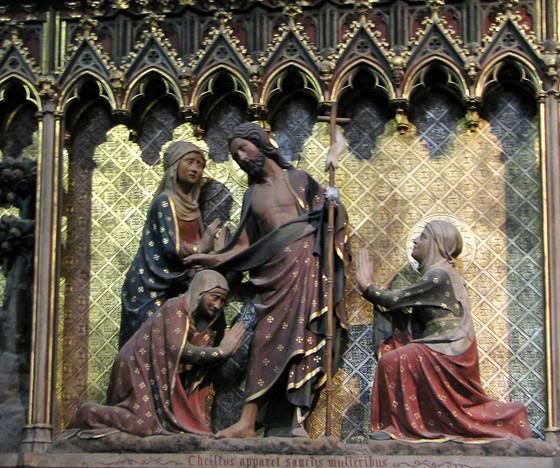
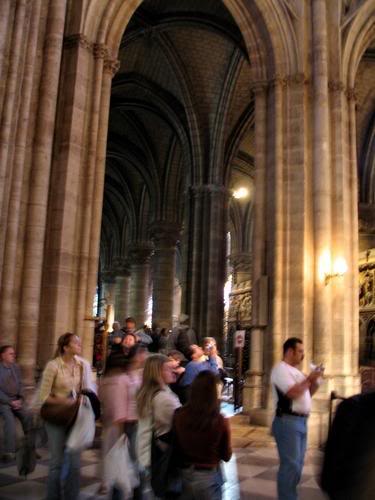
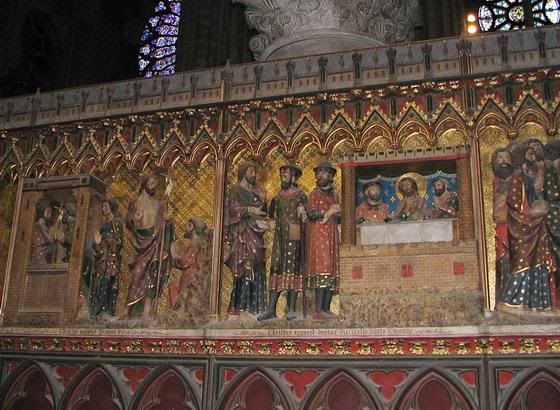
The crowds invade the Cathedral on a daily basis, making it difficult to walk around in the Cathedral in a leisurely way, absorbing the works of art, history and atmosphere. No, for me it was more like doing a giant slalom, in a desperate attempt to make my way through the masses and get a bit of space to enjoy some of the Cathedrals works of art. I did see a bit, but no, I couldn't enjoy it. And now, a few months later, while trying to write down a few words about the Cathedral, this feeling of frustration returns again. The Notre-Dame, how famous, and how important it may be, was not my place, not on this day anyway. Well.... except for few things that I did love.... oh yes, I am having mixed feelings, and I know I am not really making any sense. I know it wasn't my place, not on this day, and maybe not on any day. But at the same time I wouldn't want to have missed seeing and having visited the Notre-Dame either. This famous Cathedral is famous for a reason: it does have some amazing features that I do remember well and enjoyed so much, like the glass stained windows, the gargoyles and the sculptures around the entrance.
The Notre Dame is open to the public from 7:45 am to 6:45 pm. Be aware that you might have limited access during Masses and Services




In the centre of the Quartier Latin, just west of the tourist heart at the rue de la Huchette, and close to the River Seine, you can see the Place St-Michel. This is a small triangular square, with a large fountain that undoubtedly will draw your attention. The fountain was created by the French sculptor Davioud in 1860. The bronze sculpture in the middle is made by Duret, who was inspired by a Raphaël painting in the Louvre which depicts Saint Michel, protector of France, slaying a dragon (photo 2). On either side of the fountain you can see two large water spitting lion-like creatures (photo 1).
Simone & Åke, Paris, France

It would be great to hear from you!
You can reach me by sending me an Email.
Or leave a comment / reaction in the box below.
You can also follow me on Facebook: Sim1 around the World Blog
:-) Simone